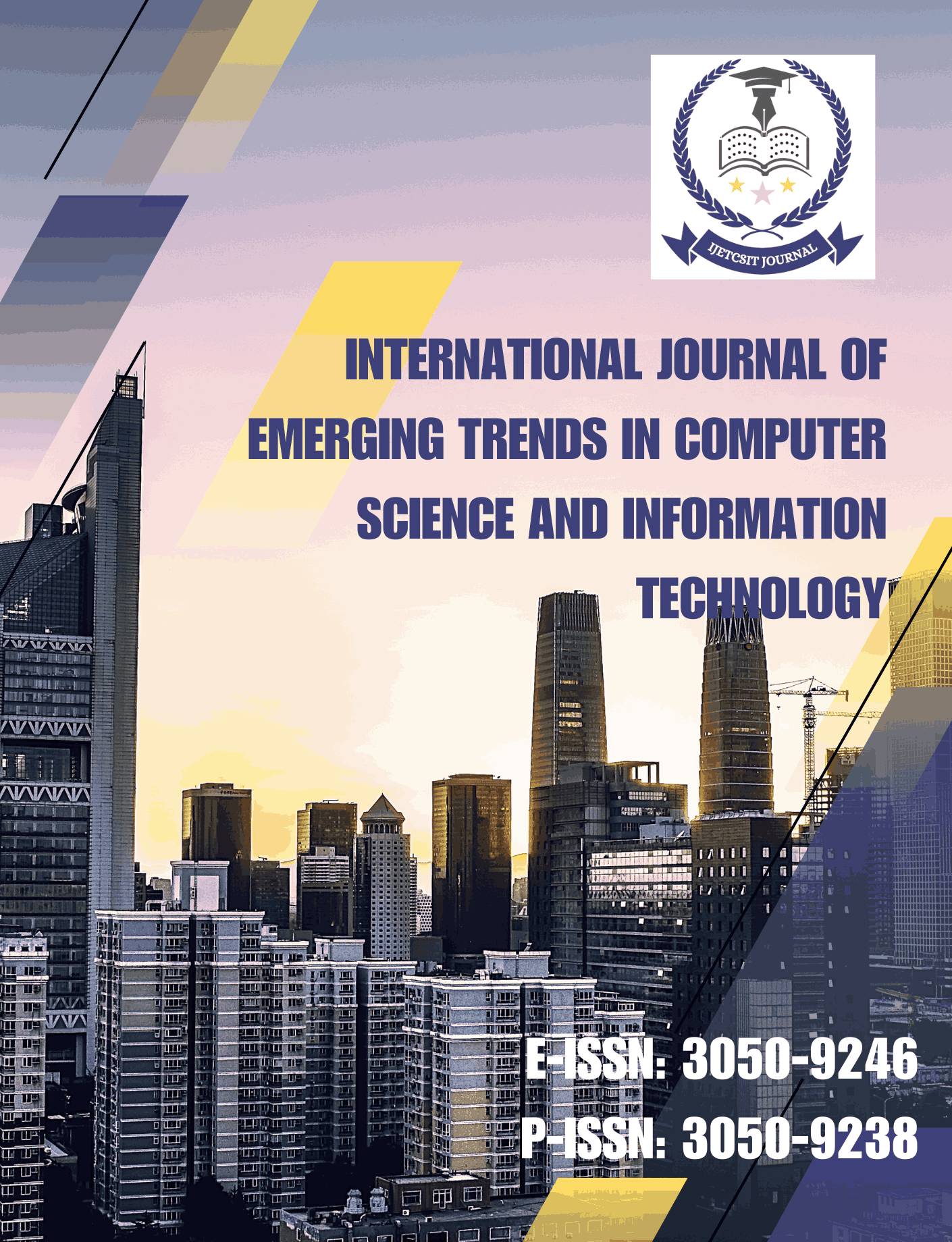Exploring the Role of AI-Enhanced Chatbots in Automating Recruitment Processes in Human Capital Management Systems
DOI:
https://doi.org/10.63282/3050-9246.IJETCSIT-V6I3P104Keywords:
Artificial Intelligence, AI Chatbots, Human Capital Management, Natural Language Processing, Talent Acquisition, Candidate ExperienceAbstract
AI has endeared itself in organizations, especially the Human Capital Management Systems (HCMS). Recruitment Management is one domain that has seen significant benefits from using advanced AI-powered chatbots right from the initial stages, that is, assessments of the candidate to the final recruiting stage or offer extension, as may be the case in this subject area. As the title suggests, this paper focuses on distinct aspects that apply to AI chatbots in the field of recruitment, with particular reference to their efficacy, appropriateness, issues, and prospects. The paper discusses the latest developments, contrasts conventional approaches to recruitment with AI-based processes, and offers a reliable approach to implementing chatbots into HCMS. Statistics and trends of actual datasets related to cost saving, time taken in hiring or candidate engagement are considered. It is evident from the study that the integration of A. I into the recruitment process is beneficial if well implemented in chatbots and erases biases in the recruitment process
Downloads
References
[1] Rowley, C., & Jackson, K. (2010). Human resource management: The key concepts. Routledge.
[2] Cappelli, P. (2019). Your approach to hiring is all wrong. Harvard Business Review, 97(3), 48-58.
[3] Marler, J. H., & Fisher, S. L. (2013). An evidence-based review of e-HRM and strategic human resource management. Human resource management review, 23(1), 18-36.
[4] Huang, M. H., & Rust, R. T. (2018). Artificial intelligence in service. Journal of Service Research, 21(2), 155-172.
[5] Van Esch, P., & Black, J. S. (2019). Factors influencing new generation candidates to engage with and complete digital, AI-enabled recruiting. Business horizons, 62(6), 729-739.
[6] Stone, D. L., Deadrick, D. L., Lukaszewski, K. M., & Johnson, R. (2015). The influence of technology on the future of human resource management. Human resource management review, 25(2), 216-231.
[7] Sikora, D. M., Thompson, K. W., Russell, Z. A., & Ferris, G. R. (2016). Reimagining overqualified human resources to promote organizational effectiveness and competitive advantage. Journal of Organizational Effectiveness: People and Performance, 3(1), 23-42.
[8] Casillo, M., Colace, F., Fabbri, L., Lombardi, M., Romano, A., & Santaniello, D. (2020, December). Chatbot in industry 4.0: An approach for training new employees. In 2020 IEEE International Conference on Teaching, Assessment, and Learning for Engineering (TALE) (pp. 371-376). IEEE.
[9] Škudienė, V., Vezeliene, G., & Stangej, O. (2020). Transforming human resource management: innovative e-HRM value creation for multinational companies. In Innovation Management (pp. 140-166). Edward Elgar Publishing.
[10] Gerasimov, V. O., Sharafutdinov, R. I., Kolmakov, V. V., Erzinkyan, E. A., Adamenko, A. A., & Vasilyeva, A. G. (2019). Control in the human capital management system in the strategy of innovative development of a region. Entrepreneurship and Sustainability Issues, 7(2), 1074.
[11] Vărzaru, D. C., & Vărzaru, A. A. (2016). The human resources information system contributes to human capital performance management within the organization. Ovidius University Annals, Economic Sciences Series, 16(1), 429-434.
[12] Ferguson, K. L., & Reio Jr, T. G. (2010). Human resource management systems and firm performance. Journal of Management Development, 29(5), 471-494.
[13] Jackson, P. (2007). A systems approach for human capital management. Vine, 37(4), 399-403.
[14] Lepak, D. P., Liao, H., Chung, Y., & Harden, E. E. (2006). A conceptual review of human resource management systems in strategic human resource management research. Research in personnel and human resources management, 217-271.
[15] Tambe, P., Cappelli, P., & Yakubovich, V. (2019). Artificial intelligence in human resources management: Challenges and a path forward. California Management Review, 61(4), 15-42.
[16] Yabanci, O. (2019). From human resource management to intelligent human resource management: a conceptual perspective. Human-Intelligent Systems Integration, 1(2), 101-109.
[17] Yawalkar, M. V. V. (2019). A study of artificial intelligence and its role in human resource management. International Journal of Research and Analytical Reviews (IJRAR), 6(1), 20-24.
[18] Debnath, B., & Agarwal, A. (2020). A framework to implement AI-integrated chatbots in educational institutes. Big Data & Smart City, 16.
[19] Satu, M. S., & Parvez, M. H. (2015, November). Review of integrated applications with the aim-based chatbot. In 2015 International Conference on Computer and Information Engineering (ICCIE) (pp. 87-90). IEEE.
[20] Maddumage, C., Senevirathne, D., Gayashan, I., Shehan, T., & Sumathipala, S. (2019, March). Intelligent recruitment system. In 2019 IEEE 5th International Conference for Convergence in Technology (I2CT) (pp. 1-6). IEEE.
[21] Nawaz, N., & Gomes, A. M. (2019). Artificial intelligence chatbots are new recruiters. IJACSA) International Journal of Advanced Computer Science and Applications, 10(9).
[22] Vootkuri, C. AI-Powered Cloud Security: A Unified Approach to Threat Modeling and Vulnerability Management.





